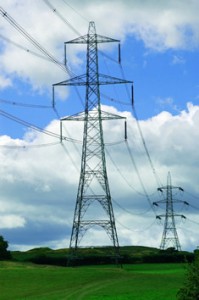For the first time in four decades, the Environmental Protection Agency is proposing to tighten the sulfur dioxide (SO2) air quality standard to protect public health. Power plants and other industrial facilities emit SO2 directly into the air.
Exposure to SO2 can aggravate asthma, cause respiratory difficulties, and result in emergency room visits and hospitalization. People with asthma, children, and the elderly are especially vulnerable to SO2’s effects.
“Short-term exposures to peak SO2 levels can have significant health effects – especially for children and the elderly – and leave our families and taxpayers saddled with high health care costs,” said EPA Administrator Lisa P. Jackson.
“We’re strengthening clean air standards, stepping up monitoring and reporting in communities most in need, and providing the American people with protections they rightly deserve,” Jackson said.
Since 40% of the nation’s electricity is generated by coal-powered plants, a new standard that is as low as the 50 parts per billion (ppb) that environmental groups are calling for, the rule could have negative effects on electric rates and the operating costs of electric vehicles.
Environmental groups are of course touting EVs as the green cars of the future, but they are costly, and so compromised in performance and packaging that it is not clear that a mass market exists for them.
The marketing problem is compounded by advances in direct-injection gasoline engines and refined hybrid technologies that are significantly increasing fuel economy, thereby decreasing greenhouse gas emissions, at a fraction of the price of EVs and with no need for costly infrastructure changes.
EPA is taking comments on a proposal to establish a new national one-hour SO2 standard, between 50 and 100 ppb. This standard is said to protect against short-term exposures ranging from five minutes to 24 hours. Because the revised standards would be more protective, EPA is proposing to revoke the current 24-hour and annual SO2 health standards.
EPA also is proposing changes to monitoring and reporting requirements for SO2. Monitors would be placed in areas with high SO2 emission levels as well as in urban areas. The proposal also would change the Air Quality Index to reflect the revised SO2 standards.
This change, according to EPA, would improve states’ ability to alert the public when short-term SO2 levels may affect their health. The proposal addresses only the SO2 primary standards, which are designed to protect public health. EPA will address the secondary standard – designed to protect the public welfare, including the environment – as part of a separate proposal in 2011.
Sulfur dioxide (SO2) is one of a group of highly reactive gasses known as “oxides of sulfur.” The largest sources of SO2 emissions are from fossil fuel combustion at powerplants (66%) and other industrial facilities (29%).
Smaller sources of SO2 emissions include industrial processes, such as extracting metal from ore, and the burning of high sulfur containing fuels by locomotives, large ships, and non-road equipment.
EPA first set standards for SO2 in 1971. EPA set a 24-hour primary standard at 140 ppb and an annual average standard at 30 ppb (to protect health). EPA also set a 3-hour average secondary standard at 500 ppb (to protect the public welfare).
The last review of the SO2 NAAQS was completed in 1996 and the Agency chose not to revise the standards. In the last review, EPA also considered, but did not set, a five minute NAAQS to protect asthmatics at elevated ventilation rates from bronchoconstriction and respiratory symptoms associated with 5-10 minute peaks of SO2.
The public comment period will be open for 60 days after the proposal is published in the Federal Register. The agency will hold a public hearing on Jan. 5, 2010 in Atlanta. EPA must issue final standards by June 2, 2010.


